Title: Egon Schiele: The Soulful Symphony of Expressionism
Egon Schiele, a luminary in the realm of Austrian art, etched his name in history through a style uniquely his own. Born on June 12, 1890, and departing this world on October 31, 1918, his brief existence blazed with the fiery passion of creativity. Under the mentorship of Gustav Klimt, he emerged as a leading figure in the Vienna Secession, embodying the essence of Expressionism in the tumultuous early 20th century.
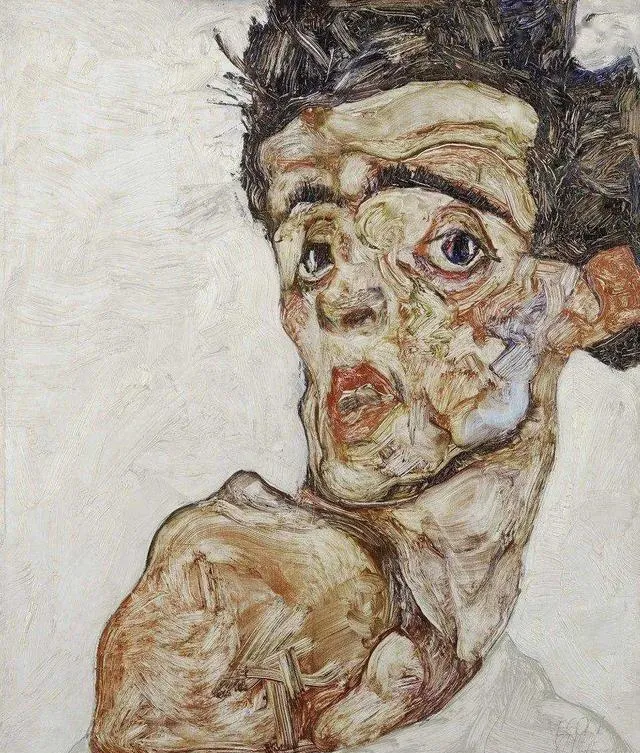
Schiele's canvases serve as portals to the raw essence of Expressionism. With contorted lines and exaggerated forms, he delves into the depths of human emotion, laying bare the raw intensity of the human experience.
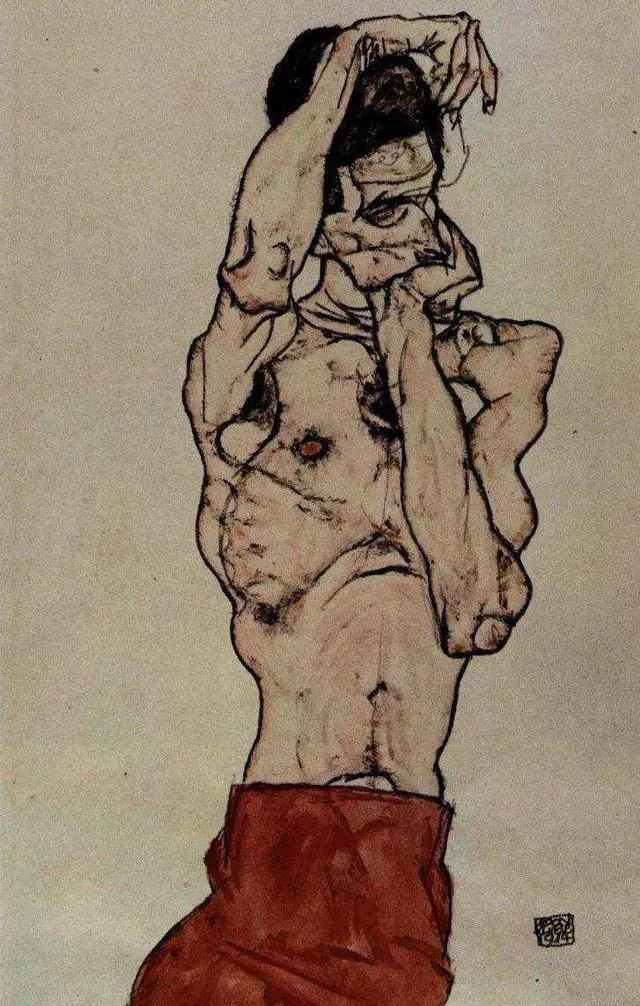
1. The Bold Strokes of Expressionism:Schiele's works are a testament to the power of Expressionism. Through twisted lines and exaggerated poses, he captures the inner turmoil and chaos of the human psyche. His paintings resonate with a sense of distortion, agony, and theatricality, inviting viewers into a world of raw emotion.
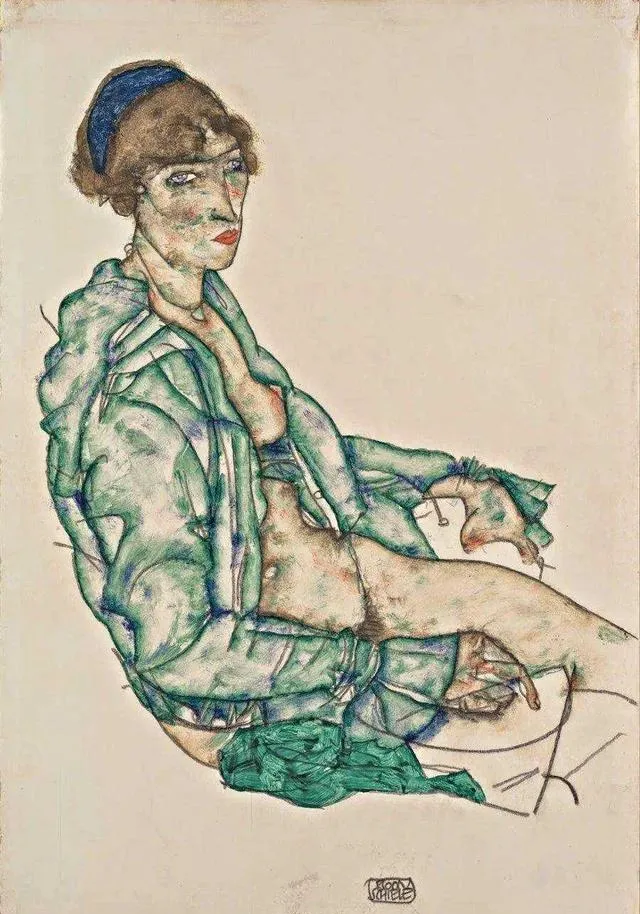
2. Self-Exploration and Autobiographical Nuances:The canvas becomes Schiele's confessional, a stage for his innermost thoughts and struggles. Through self-portraits and nude figures, he embarks on a journey of self-discovery, confronting the complexities of the human condition with unflinching honesty.
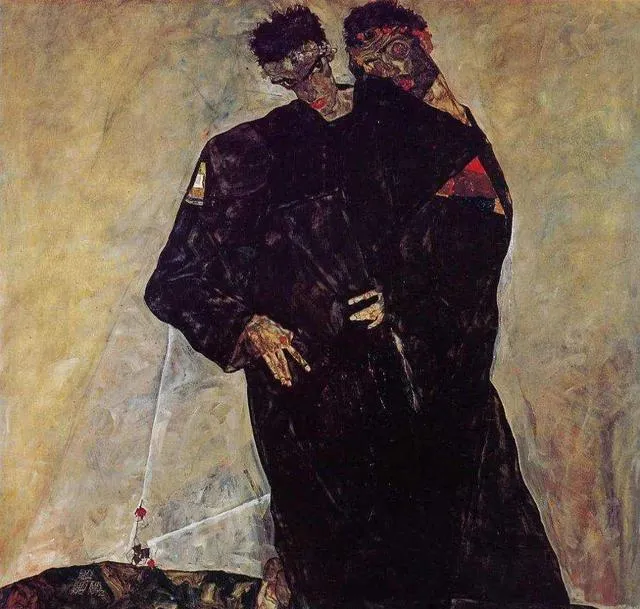
3. The Dance of Lines and Poses:Schiele's lines pulse with life, infusing his compositions with a dynamic energy. With bold brushstrokes and intricate lines, he creates captivating poses and figures, capturing the tension between emotion and physicality.
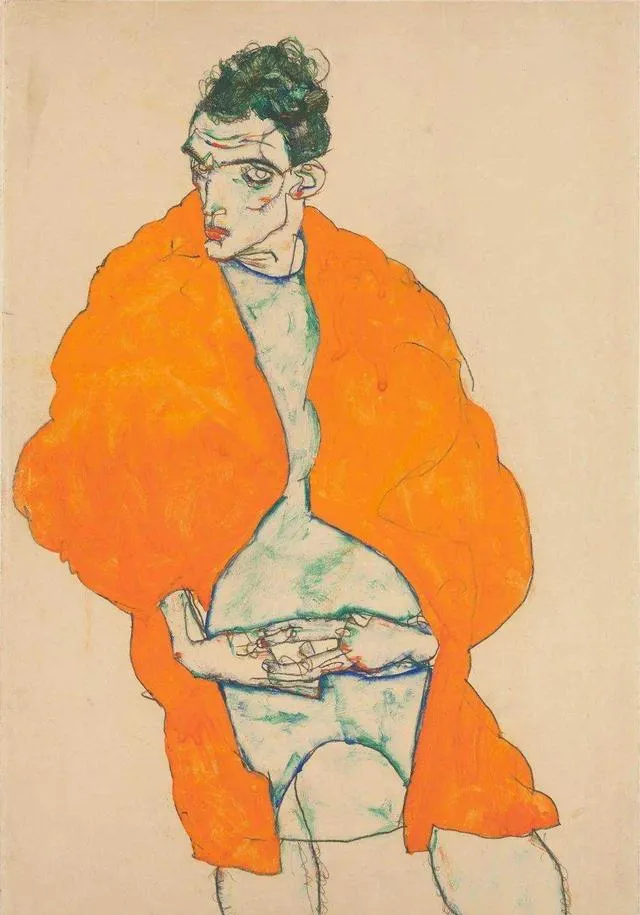
4. The Palette of Emotions:Schiele's palette is a symphony of hues—deep reds, vibrant greens, and somber grays—imbuing his works with a sense of depth and intensity. His masterful use of color underscores the emotional resonance of his art, plunging viewers into the depths of the human soul.
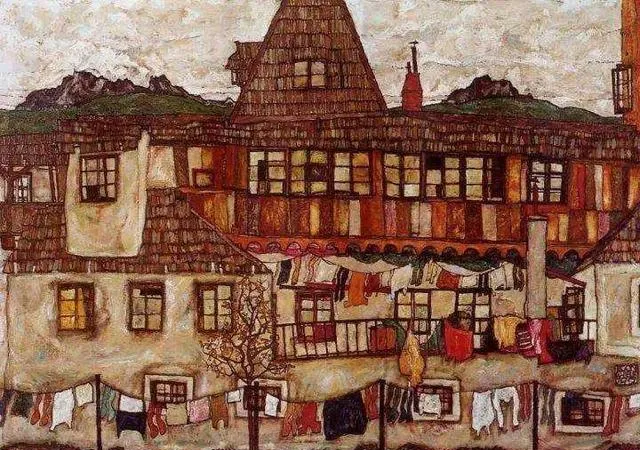
In "The Laundry Room," painted in 1917, Schiele's artistic flair and uninhibited use of color breathe life into the canvas. The rhythmic arrangement of elements—roof tiles, walls, windows, and chimneys—creates a visual harmony akin to a joyous melody. The fluttering laundry, caught in the wind, dances with grace, infusing the scene with a sense of whimsy and vitality.

The objects in the painting, predominantly hues of red-gray, orange-yellow, warm green-gray, and white-gray, intertwine and intersect, showcasing Schiele's mastery of color and artistic vision.
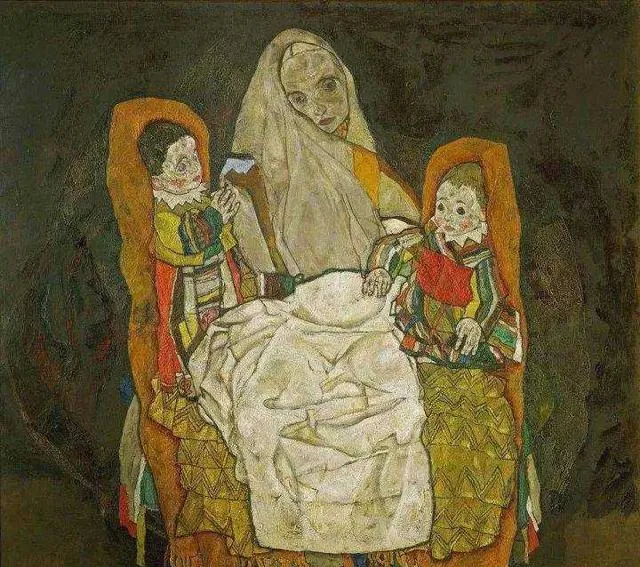
"Mother with Two Children" serves as a poignant reflection on the ravages of war on familial bonds. Against a stark black backdrop, the mother and children form a stable triangular composition, their presence heightened by the somber atmosphere. The contrast between the mother's ghostly pallor and the children's vibrant attire underscores the generational gap and the toll of conflict on innocence.

Egon Schiele's art transcends mere representation, delving into the depths of human experience with unparalleled intensity. Through his bold Expressionism, he invites viewers to confront their own inner turmoil and empathize with the struggles of others. In each brushstroke lies a story, in each color a sentiment—a testament to the enduring power of art to illuminate the darkest corners of the human soul.











